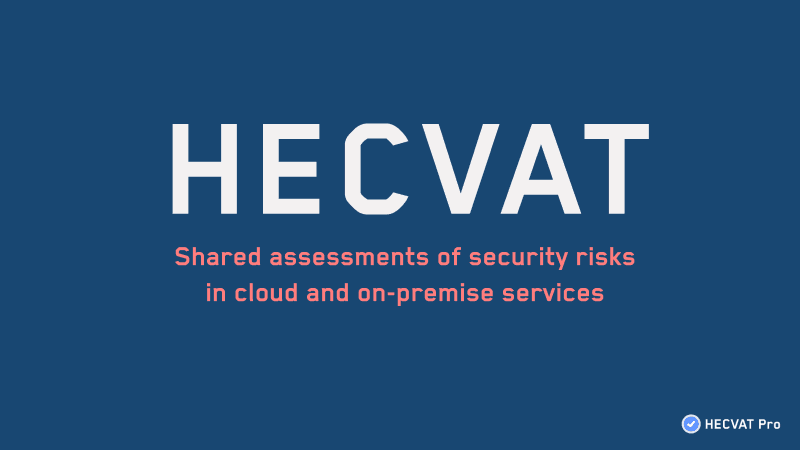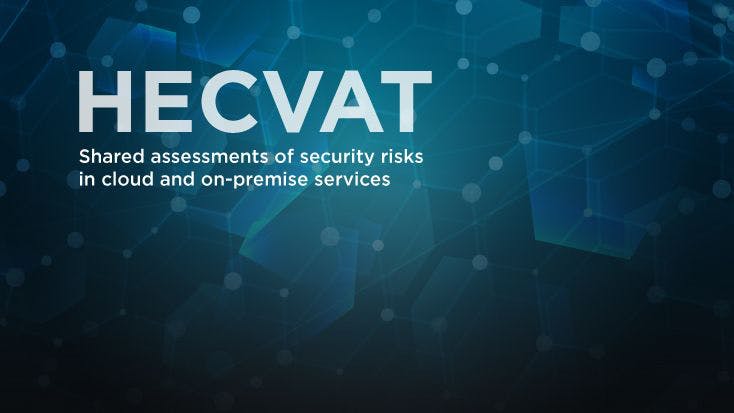Table of Contents
ToggleMastering Vendor Risk Management: Complete Guide
In the swiftly changing digital environment, securing your organization’s data and systems against potential threats is paramount. With the increasing reliance on external vendors for critical business operations, the significance of a sound Vendor Risk Management (VRM) program has never been more crucial. This article, inspired by insights from HECVATPro, aims to shed light on the key elements of an effective VRM program, ensuring your organization stays ahead of potential risks.
Table of Contents
- Introduction to Vendor Risk Management
- Key Components of a VRM Program
- Benefits of Implementing a VRM Program
- Steps to Create a VRM Program
- Conclusion
Introduction to Vendor Risk Management
Vendor Risk Management involves identifying, assessing, mitigating, and monitoring the risks associated with third-party vendors that provide goods and services to an organization. Given the complexity of today’s digital ecosystem, a VRM program is essential for managing the potential security breaches, compliance issues, and operational risks posed by these external entities.
Key Components of a VRM Program
To understand the essence of a VRM program, we have broken it down into its core components, represented in the table below:
| Component | Description |
|---|---|
| Risk Assessment | The process of identifying and evaluating the risks associated with a vendor, taking into consideration the nature and scope of the services they provide. |
| Due Diligence | Conducting thorough investigations into the vendor’s practices, policies, and procedures to ensure they meet the organization’s standards for security and compliance. |
| Contract Management | The establishment of clear, comprehensive contracts that include clauses related to security requirements, data privacy, and compliance standards. |
| Continuous Monitoring | Ongoing surveillance of vendor performance and compliance to quickly identify and address any new risks. |
| Incident Response | Establishing protocols for responding to security incidents or breaches that involve vendor services or products. |
Benefits of Implementing a VRM Program
Implementing a robust VRM program offers a multitude of advantages, ensuring that your organization can securely and effectively collaborate with external vendors. The most significant benefits include:
- Enhanced Security Posture: By systematically assessing and addressing the risks presented by vendors, organizations can significantly reduce the likelihood of data breaches and cyber attacks.
- Regulatory Compliance: Many industries are subject to strict regulations concerning data privacy and security. A VRM program helps ensure that both the organization and its vendors adhere to these regulatory requirements.
- Risk Mitigation: Proactively managing vendor risks can prevent potential financial losses, legal consequences, and damage to the organization’s reputation.
Steps to Create a VRM Program
The creation of a VRM program can be broken down into actionable steps, allowing for a methodical approach to managing vendor risks:
- Vendor Identification: Catalog all current and potential vendors to understand the breadth of your external partnerships.
- Risk Assessment: Evaluate the risks associated with each vendor, considering factors such as the data they access and the services they provide.
- Due Diligence: Perform thorough due diligence on each vendor to ensure their practices align with your security and compliance standards.
- Contract Negotiation: Develop and negotiate contracts that explicitly outline security requirements, data privacy standards, and compliance obligations.
- Ongoing Monitoring: Establish processes for the continuous monitoring of vendor compliance and performance.
- Incident Response Planning: Prepare for potential security incidents involving vendors by creating a response plan that includes communication strategies and remediation steps.
Conclusion
In an age where data breaches and compliance failures can have catastrophic consequences for any organization, implementing a Vendor Risk Management program is not just beneficial; it’s a necessity. By following the steps outlined in this guide and leveraging the resources available at HECVATPro, your organization can build a robust VRM program that not only protects against current threats but is also poised to adapt to future challenges.
For further details on ensuring your vendor partnerships are secure and compliant, visit HECVATPro‘s Accessibility Statement, reflecting their commitment to making security practices accessible and straightforward.
Remember, the goal of a VRM program is not just to mitigate risks but also to foster strong, secure, and fruitful relationships with your vendors, laying the foundation for a resilient and dynamic business environment.
Given the scope and detail sought in the initial part of our guide, let’s continue exploring the nuanced terrains of Vendor Risk Management (VRM) by focusing on advanced strategies, the role of technology in VRM, and frequently asked questions that can further solidify your understanding and application of a VRM program.
Advanced Strategies in Vendor Risk Management
Adopting advanced strategies can elevate your VRM program, transforming it from a basic compliance requirement to a strategic advantage. Here are several advanced strategies worth considering:
- Segmentation and Prioritization: Not all vendors pose the same level of risk. By segmenting vendors based on the criticality of their service and the sensitivity of their data access, organizations can prioritize risk management efforts more effectively.
- Integration with Overall Risk Management: VRM should not operate in isolation. Integrating it with the broader organizational risk management framework ensures a unified approach to risk across all domains.
- Leveraging Technology and Automation: The use of specialized VRM software can streamline the process of assessing, monitoring, and managing vendor risks. Automation of routine tasks can enhance efficiency and reduce the likelihood of human error.
- Vendor Risk Scoring: Implementing a standardized scoring system for evaluating vendor risk can help in quantifying risk levels, making it easier to compare and prioritize risks across different vendors.
The Role of Technology in Vendor Risk Management
In the current era, technology plays a pivotal role in enhancing the effectiveness and efficiency of VRM programs. Below are key technological tools and capabilities that are shaping the future of VRM:
- VRM Platforms: Comprehensive software platforms that offer a centralized repository for storing vendor information, risk assessments, contracts, and monitoring activities. These platforms often feature customizable risk assessment templates, automated alerts for contract renewals or compliance changes, and analytical tools for risk analysis.
- Artificial Intelligence (AI) and Machine Learning (ML): AI and ML algorithms can predict potential vendor risks by analyzing patterns and trends from vast quantities of data. These technologies can provide early warnings about vendors that may become risky in the future.
- Blockchain for Enhanced Transparency: Some organizations are exploring blockchain technology to create transparent and immutable records of vendor assessments, contracts, and compliance certificates. This can help in enhancing trust and accountability in vendor relationships.
Frequently Asked Questions
- How often should we reassess vendor risks?
- Vendor risk reassessment should be an ongoing activity. High-risk vendors may require quarterly or bi-annual reassessments, while lower-risk vendors might be reassessed annually.
- What should be done if a vendor fails to meet security requirements?
- Communication is key. Engage with the vendor to understand the reasons behind the shortfall and discuss potential remedial actions. If necessary, reconsider the partnership or enforce contractual penalties for non-compliance.
- Can small businesses benefit from a VRM program?
- Absolutely. Small businesses often rely on vendors for critical services and face significant risks if those vendors are not properly managed. A scaled VRM program can provide vital protection.
- Is there a one-size-fits-all VRM program?
- No, VRM programs should be tailored to the specific needs, size, industry, and risk profile of each organization. Customization is crucial for effectiveness.
Conclusion
Embarking on the journey of implementing a Vendor Risk Management program necessitates a strategic approach, with a clear understanding of the nuances involved in managing third-party risks. By integrating advanced strategies, leveraging technological advancements, and maintaining a pulse on evolving best practices, organizations can build a resilient VRM program that not only protects against risks but also fosters beneficial vendor relationships.
For continued insight and resources on crafting a comprehensive VRM program, remember to visit HECVATPro. As your partner in vendor risk management, HECVATPro remains dedicated to providing up-to-date guidelines, tools, and support to navigate the complex landscape of vendor risks successfully.



